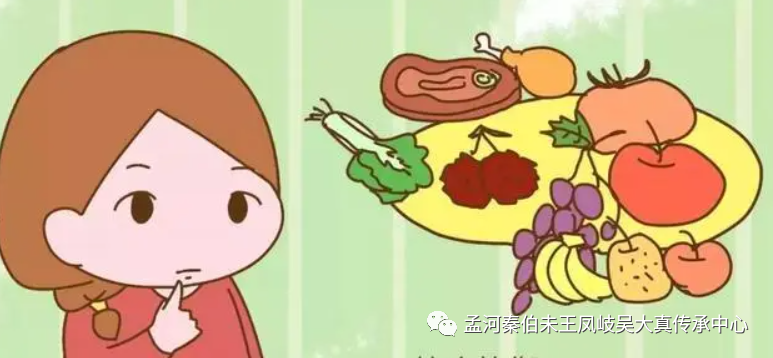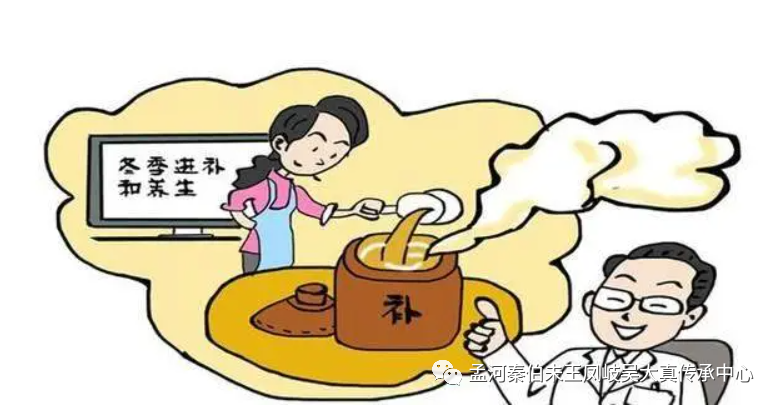Dietary therapy is a method that utilizes the properties of food to regulate bodily functions under the guidance of Traditional Chinese Medicine (TCM) theories, aiming to achieve health or prevent diseases. The foods used in dietary therapy are common in our daily lives, and through accurate combinations and careful preparation, they exert their natural effects. Over time, this assists the body in activating its self-healing abilities, leading to natural health from the inside out. 1 TCM’s Understanding of Dietary Therapy
1 TCM’s Understanding of Dietary Therapy

TCM has long recognized that food not only provides nutrition but also can heal diseases and eliminate ailments. “Food is the heaven for the people.” In the process of searching for food, primitive humans discovered that certain foods helped recover from existing diseases and even enhanced physical strength and mental vitality. This led from accidental consumption to active seeking, and through a long period of experience accumulation, they gradually discovered medicinal properties. In modern times, physician Zhang Xichun pointed out in “Medical Records of Traditional Chinese and Western Medicine” that food “not only treats diseases but also satisfies hunger.” The concept of “medicinal and food origin” is one of the most valuable contributions of Chinese medicine to humanity, hence the saying in medical history that “medicine (drugs) and food share the same origin.” Commonly used TCM herbs like ginger (jiang) and cinnamon (gui) were originally culinary spices, and legumes and rice were originally grains, thus dietary therapy has a longer history than medicinal therapy.
 2 How to Choose Foods for Dietary Therapy Avoid spicy foods
2 How to Choose Foods for Dietary Therapy Avoid spicy foods

According to the “Inner Canon of Huangdi,” “Heaven provides humans with five qi, and Earth provides humans with five flavors.” Foods are also categorized into yin and yang, cold and hot, and have “four natures” and “five flavors,” which apply to TCM treatment principles such as “cold is treated with heat” and “heat is treated with cold.” By using the principles of four natures and five flavors, suitable foods can be selected to achieve the goal of health preservation and disease prevention.
Five flavors refer to pungent, sour, sweet, bitter, and salty, which are components of TCM’s five-element theory and are widely used in TCM diagnosis, treatment, and prescription. Different flavors of herbs have different effects. Pungent flavor can disperse and move, sour flavor can astringe and bind, sweet flavor can tonify and moderate, bitter flavor can purge and dry, and salty flavor can soften and moisten. The five grains, five fruits, five livestock, and five vegetables consumed daily each possess their respective flavors. The five flavors correspond to the five organs in TCM, each having different effects. The “Spiritual Pivot” primarily discusses how the five flavors enter the five organs, such as sour flavor entering the liver, bitter flavor entering the heart, pungent flavor entering the lungs, sweet flavor entering the spleen, and salty flavor entering the kidneys. This illustrates the relationship between the five flavors and diseases of the five organs based on the five-element generation and overcoming theory.
Sour foods mainly enter the liver meridian and have astringent and binding effects, which can nourish the liver. If there are liver issues, consuming sour foods in moderation can be beneficial. Bitter foods enter the heart meridian, have heat-clearing and excitability-inhibiting effects, promote the excretion of metabolic waste and toxins from the body, and can help clear heat; they can also break down greasy foods, promoting the breakdown of cholesterol and fats in the blood, reducing the occurrence of hypertension, hyperlipidemia, and hyperglycemia, and can delay arteriosclerosis. Sweet foods enter the spleen meridian, have effects of tonifying deficiency and harmonizing, strengthening the spleen and nourishing the stomach, alleviating pain, and are used to prevent and treat sub-health states and diseases caused by spleen and stomach deficiency, qi and blood insufficiency, and weak transportation. Pungent foods mostly enter the lung meridian and can treat lung diseases such as external wind-cold colds and coughs. Salty foods enter the kidney meridian and can treat kidney diseases such as kidney deficiency, edema, and five hearts heat.
 3 Common Foods for Dietary Therapy
3 Common Foods for Dietary Therapy

1. Foods for Nourishing the Liver: Grapes: Rich in glucose and vitamins, they can increase plasma albumin levels. The organic acids in grapes aid digestion and promote appetite, and they are also beneficial in preventing hepatitis, which is prevalent in modern times; Soybeans: In addition to being rich in phytoestrogens, they also contain trace elements like calcium, iron, and phosphorus, which are beneficial for promoting liver regeneration and repairing damaged liver cells; Animal liver: From the perspective of “like nourishes like,” animal liver can protect the liver due to its rich nutrients, such as proteins, folic acid, vitamin B12, and various elements.2. Foods for Nourishing the Heart: Longan: Beneficial for the heart and spleen, tonifying qi and blood, and calming the spirit, especially suitable for those with heart palpitations due to insufficient heart blood; Kumquat: Has effects of regulating qi, relieving depression, and resolving phlegm. Kumquat is particularly suitable for palpitations caused by phlegm obstructing the heart vessels and qi stagnation, including those caused by hypertension, arteriosclerosis, hyperthyroidism, coronary heart disease, or arrhythmia; Black fungus: Nourishes yin, strengthens the stomach, tonifies qi, invigorates blood, and moistens dryness. Black fungus is a natural anticoagulant that can prevent and treat arteriosclerosis, coronary heart disease, hypertension, and hyperlipidemia. Those with palpitations due to cardiovascular diseases should consume it regularly for significant benefits.3. Foods for Nourishing the Spleen: Sweet potatoes: Also known as yams, they have effects of tonifying the spleen and blood, benefiting qi, and promoting bowel movements; Japonica rice: Has the effect of tonifying the spleen and benefiting qi; Coix seed: Also known as Job’s tears, has the effect of tonifying the spleen and strengthening the stomach. Those with spleen deficiency should cook coix seed with japonica rice for congee, which complements each other well; White hyacinth bean: Can tonify the spleen and stomach deficiency, and can be consumed cooked or in congee, both of which are beneficial.4. Foods for Nourishing the Lungs: Tremella: Moistens the lungs, resolves phlegm, nourishes yin, and generates fluids, can treat lung dryness, dry throat, and thirst; Radish: Raw consumption can treat heat disease thirst and lung heat cough. If juiced with sugar cane, pear, and lotus root, the effect is even better, having effects of clearing heat, resolving phlegm, generating fluids, stopping cough, and benefiting the stomach and aiding digestion; Lily: Cooked or in soup, has certain effects on treating chronic cough, dry cough, and throat pain due to lung tuberculosis and various autumn dryness diseases; Water chestnut: Can be juiced with lotus root for drinking, has effects of clearing heat, generating fluids, resolving dampness, and detoxifying, can treat heat disease injuring fluids, dry mouth and throat, and lung heat cough.5. Foods for Nourishing the Kidneys: Dried scallops: Also known as scallops, can tonify the kidneys and nourish yin, thus those with kidney yin deficiency should consume them regularly; Goji berries: Have effects of tonifying the kidneys, nourishing the liver, benefiting vision, strengthening bones, alleviating lower back pain, and prolonged consumption can promote longevity, especially suitable for middle-aged women with kidney deficiency; Black sesame: Can tonify the liver and kidneys, moisten the five organs, and is beneficial for dizziness, premature graying, hair loss, lower back soreness, and constipation due to insufficient liver and kidney essence and blood; Walnuts: Can tonify the kidneys, secure essence, promote diuresis, relieve stones, moisten the intestines, and warm the lungs to stop cough, commonly used for kidney deficiency, lower back pain, and urinary stones; He Shou Wu: Has effects of tonifying the liver and kidneys, benefiting essence and blood, and has been used by physicians throughout history for those with kidney deficiency. Those with kidney deficiency often experience premature graying, weakness in the lower back and knees, joint pain, or men with nocturnal emissions and women with leukorrhea should consume it, but it should not be eaten raw.

